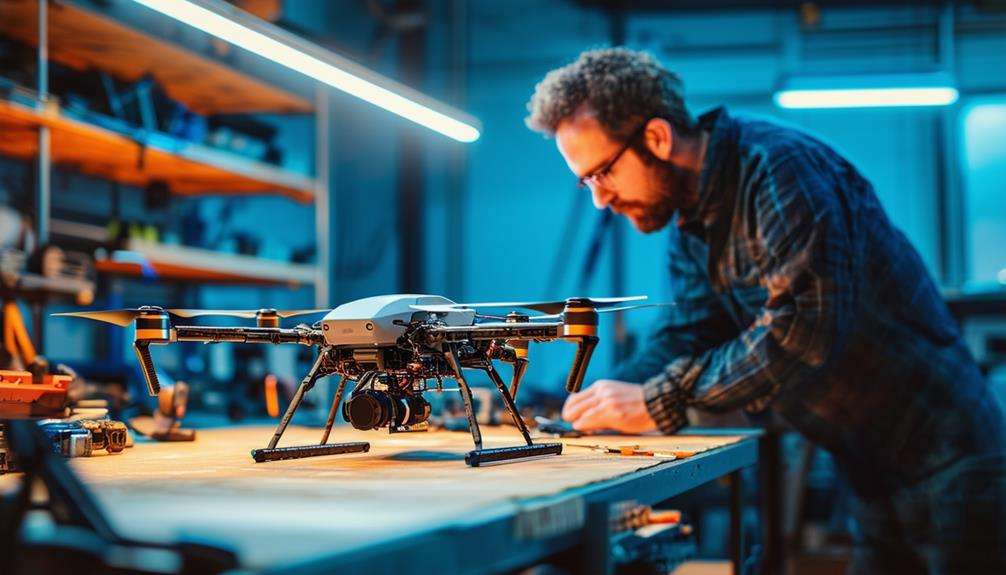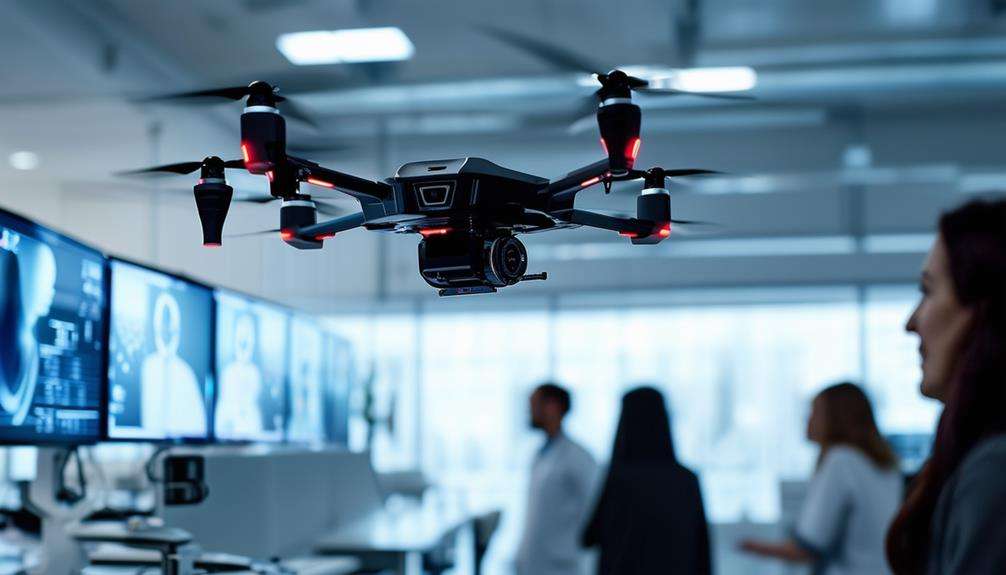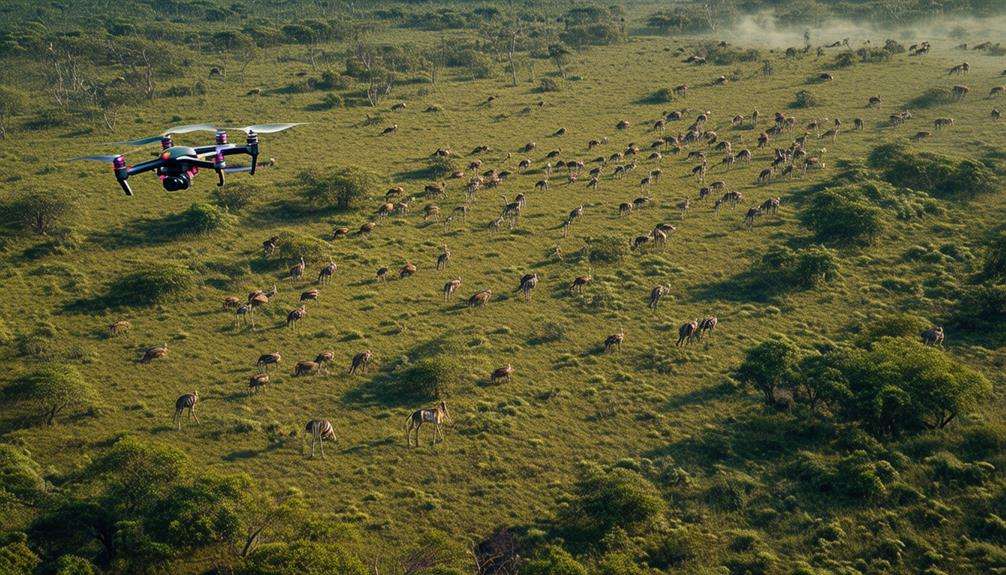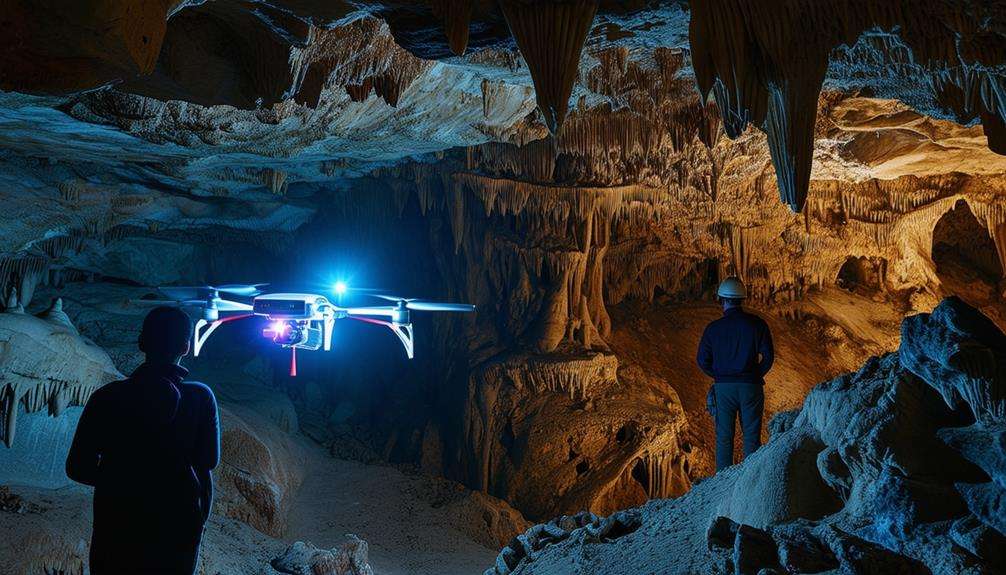The Evolution of Drone Design: From Early Models to Modern UAVs
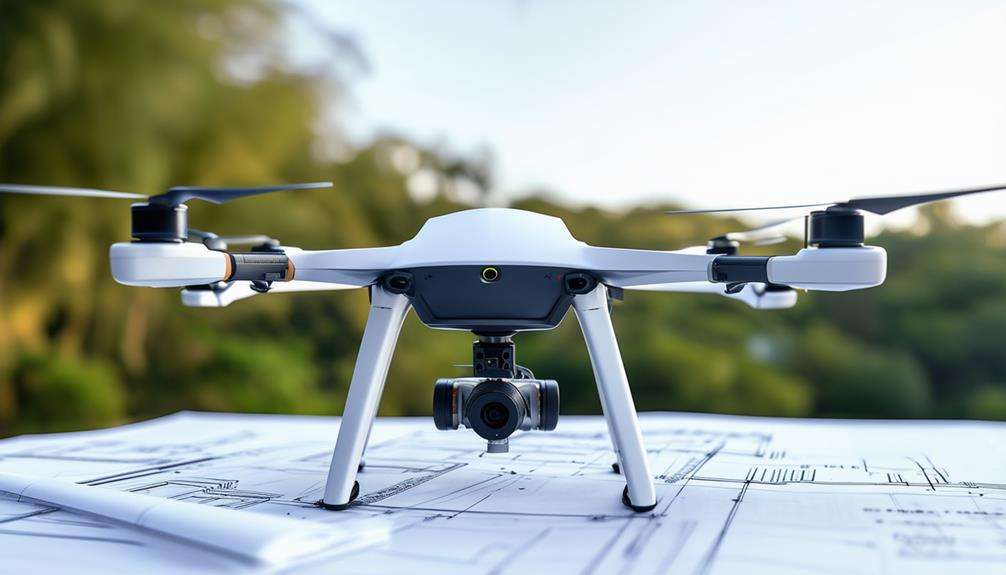
Imagine witnessing the evolution of drones from simple radio-controlled aircraft in the early 20th century to today's advanced UAVs. Technological breakthroughs have transformed these machines, incorporating GPS, advanced sensors, and autonomous flight capabilities.
Each era has introduced innovations that have continually expanded the possibilities. With drones now performing complex tasks autonomously, the future holds even more potential. Understanding these milestones offers a glimpse into the endless possibilities of drone design.
Early Concepts of Unmanned Flight
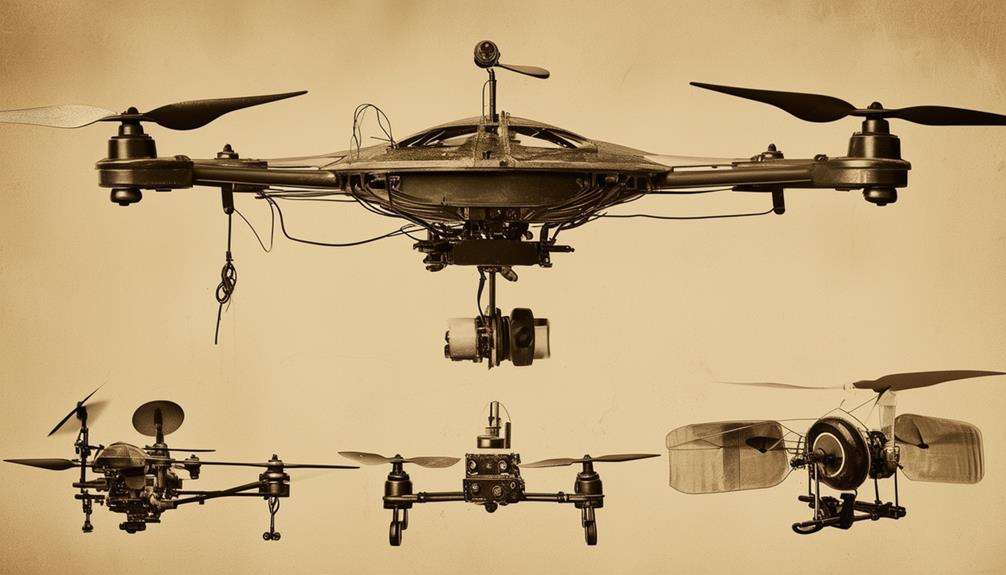
The inception of unmanned flight can be traced back to 1916, when Archibald Low successfully developed the first radio-controlled aircraft. This pioneering achievement laid the groundwork for modern UAV (Unmanned Aerial Vehicle) technology.
During World War I, both Allied and Central Powers recognized the strategic importance of remotely controlled aircraft for reconnaissance and tactical operations. A notable example from this period was the Kettering Bug, a pilotless aerial torpedo developed by the United States.
As technology evolved, the De Havilland company made significant contributions with the DH.82B Queen Bee. This aircraft was one of the earliest pilotless, radio-controlled drones, designed for use as a target during military training exercises. The success of the Queen Bee demonstrated the practical applications of remote control in aviation, further advancing UAV development.
Throughout these formative years, the focus remained on perfecting the technology that enabled aircraft to be controlled from a distance. These innovations were crucial during wartime, providing new strategies and capabilities.
The Birth of Radio-Controlled Aircraft
Radio-controlled aircraft emerged as a groundbreaking innovation in the early 20th century, revolutionizing the aviation industry. Archibald Low developed the initial successful radio-controlled aircraft in 1916, marking a pivotal moment in both military and technological landscapes. During World War I, these aircraft were primarily used for reconnaissance missions, providing valuable intelligence without risking pilot lives.
By World War II, both Allied and Axis powers had expanded the use of UAVs for more complex reconnaissance tasks. Remote-controlled target drones also became integral to military training exercises, allowing pilots to practice shooting at moving targets without human casualties. These target drones showcased the practical applications of UAV technology beyond mere observation.
Post-war, innovation in UAV technology continued unabated. The 1980s saw significant advancements, particularly with the introduction of GPS technology, which improved navigation and control capabilities. This set the stage for the advanced systems seen today.
Modern drones now feature GPS navigation, flight planning software, and intelligent flight modes, reflecting their evolution from early radio-controlled models. The transition from Archibald Low's initial experiments to today's sophisticated UAVs underscores the transformative impact of radio-controlled aircraft on aviation.
World War I Innovations
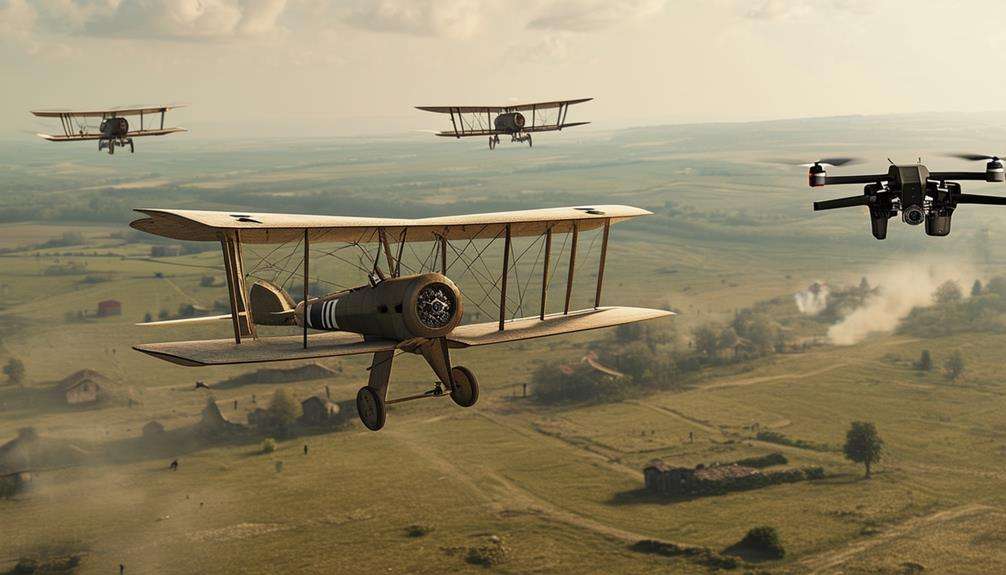
World War I saw significant innovations in drone technology, building on the pioneering work of radio-controlled aircraft. The British forces were at the forefront of developing early drone prototypes for various military applications, such as target practice and training. One notable innovation was the Aerial Target, an early radio-controlled aircraft designed to improve the accuracy of anti-aircraft gunners without risking human lives.
Key advancements include:
- Aerial Target: These early drones were radio-controlled and used for target practice, enhancing the skills of anti-aircraft gunners.
- Queen Bee: Another radio-controlled aircraft developed by the British, which further refined the concepts of pilotless flight and remote control.
- Training and Target Location: These early drone prototypes were crucial for training personnel and locating targets, laying the groundwork for future drone technology.
Developments During World War II
World War II catalyzed significant advancements in drone technology, laying the groundwork for contemporary unmanned aerial vehicles (UAVs). During this period, various drone models were developed and utilized primarily for training missions and target practice. The Ruston Proctor Aerial Target was one of the early drone models used for these purposes.
The Kettering Bug, initially developed in 1917, underwent substantial modifications during World War II, exemplifying the rapid progression in UAV technology. British forces extensively employed the de Havilland Queen Bee for target practice and training missions, thereby solidifying the role of drones in military preparations.
Among the notable drone models of this era was the Radioplane OQ-2. This mass-produced drone was mainly used for target towing and anti-aircraft gunnery training, proving invaluable in enhancing the skills of military personnel. These advancements during World War II established a foundation for the future of drone technology, highlighting the potential of UAVs in various military applications.
Post-War Technological Advances
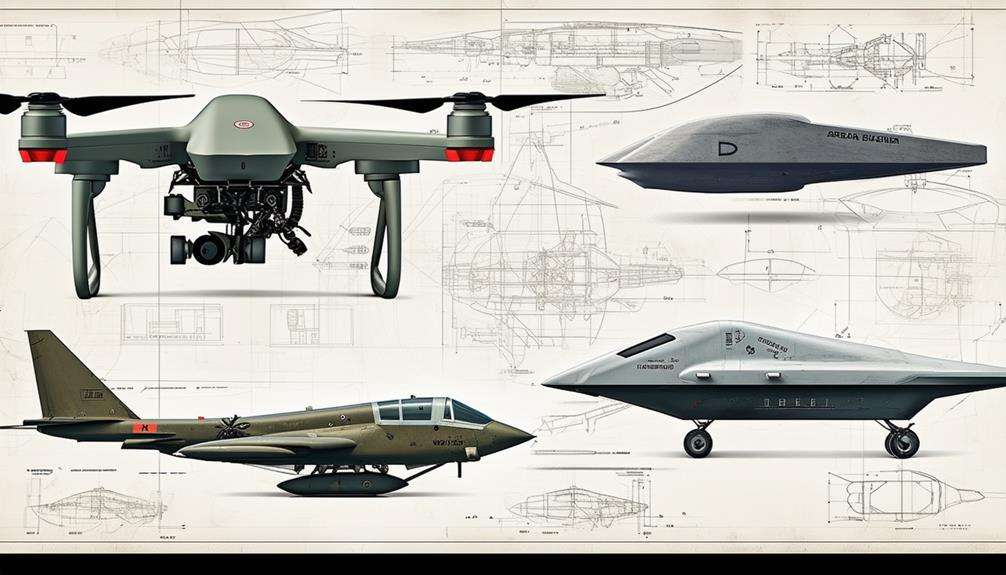
Following the remarkable progress made during World War II, the post-war period saw significant advancements in drone technology, transforming their capabilities and applications. The integration of jet engines during this time marked a crucial development, offering drones increased speed and performance. This advancement allowed drones to cover greater distances and complete missions faster than ever before.
In the 1960s, the development of advanced flight control systems and autopilots significantly improved the precision and autonomy of drones. These innovations enabled drones to maintain stable flight and execute complex maneuvers with minimal human intervention.
By the 1980s, the introduction of new materials such as carbon fiber and composites resulted in lighter, more durable drone structures. This improvement enhanced the drones' efficiency and endurance, making them more versatile for a range of missions.
Key highlights of post-war progress in drone design include:
- Jet Engines: Enhanced speed and range capabilities.
- Flight Control Systems and Autopilots: Improved precision and reduced need for human control.
- Innovative Materials: Lighter, stronger drones with greater endurance.
These technological advances laid the groundwork for the next phase in drone evolution, expanding their roles in reconnaissance and beyond.
The Rise of Surveillance Drones
Surveillance drones have revolutionized intelligence gathering by providing real-time data through advanced sensors and cameras. From early models like the Queen Bee to today's sophisticated UAVs, their evolution has significantly transformed military operations. While drones like the Midge initially followed pre-programmed flight paths, modern UAVs now offer unparalleled precision and flexibility.
In military contexts, surveillance drones have proven indispensable. During the Gulf War, British forces effectively used them for artillery spotting and reconnaissance, highlighting their strategic value. Today, they play a crucial role in border security and counterterrorism, delivering essential real-time information that facilitates rapid decision-making. Whether monitoring expansive border regions or identifying terrorist threats, these drones enhance national security.
However, the proliferation of surveillance drones also raises substantial privacy concerns. As UAVs become more advanced and widespread, the potential for misuse escalates. Constant surveillance prompts ethical questions about balancing security needs with individual privacy rights. Society must address these concerns to ensure that the advantages of surveillance drones don't come at the cost of personal freedoms.
GPS and Navigation Breakthroughs
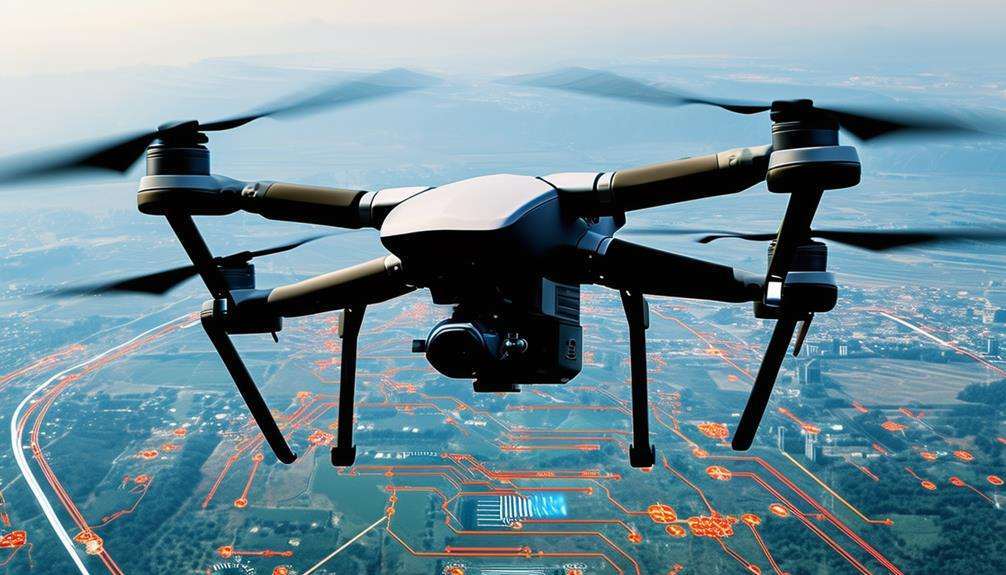
With the advent of GPS technology, drone navigation has advanced significantly, enabling precise tracking and autonomous flight. Early UAVs struggled with manual control and rudimentary sensors, but GPS integration has transformed their capabilities. Modern drones can now carry out complex missions with remarkable accuracy, thanks to advanced GPS systems.
Consider these key benefits of GPS-enabled drone navigation:
- Autonomous Flight: UAVs can fly predefined routes without human intervention, allowing for efficient and reliable operations.
- Waypoint Navigation: Drones can navigate through multiple waypoints, ensuring they follow exact paths and complete missions with pinpoint accuracy.
- Operational Efficiency: With precise route planning and positioning, drones can perform tasks faster and more effectively, leading to higher mission success rates.
GPS technology has revolutionized route planning for UAVs, enabling them to adapt to changing conditions and avoid obstacles autonomously. This not only enhances operational efficiency but also improves safety during missions.
The integration of GPS in drone design ensures that modern UAVs are more reliable and capable than ever, handling intricate tasks with ease and precision. The breakthroughs in GPS and navigation are a cornerstone of the advancements in drone technology, paving the way for future innovations.
The 21st Century Drone Explosion
The 21st century has seen a remarkable surge in drone technology, propelled by advancements in materials and power sources. Modern drones are equipped with GPS, intelligent flight modes, and AI, significantly expanding their commercial applications. This explosion in capabilities is transforming industries and redefining the boundaries of what's possible.
Commercial Drone Applications
Driven by rapid technological advancements, commercial drones have revolutionized industries, marking a significant shift in how businesses operate and innovate. The commercial drone market has grown exponentially, with global revenues hitting $14.1 billion in 2018. This surge is largely due to increased drone adoption across various sectors, leveraging cutting-edge drone technology for diverse applications.
One of the most notable uses is in delivery services. Major companies like Amazon and UPS are testing drone delivery systems to improve logistics and provide faster, more efficient service. These initiatives signal a broader trend of business adoption, transforming traditional supply chains.
Imagine this:
- A bustling city skyline where drones zip through the air, delivering packages to doorsteps in minutes.
- Vast agricultural fields monitored by drones, ensuring efficient crop health and resource use.
- Construction sites where drones survey progress, providing real-time data to project managers.
The drone industry is set to continue its upward trajectory, with market projections estimating a value of over $43 billion by 2024. This growth is driven by continuous advancements in drone technology and the expanding scope of business adoption, solidifying drones as indispensable tools in modern commerce.
Technological Advancements Driving Growth
How have cutting-edge innovations in materials and technology fueled the explosive growth of drones in the 21st century? Lightweight materials and powerful batteries have revolutionized Unmanned Aerial Vehicles (UAVs), making them more efficient and versatile. These advancements enable improved UAV design, allowing drones to fly longer and carry heavier payloads.
GPS technology integration has significantly enhanced the navigation and control capabilities of modern drones. With precise positioning, UAVs can undertake complex missions with remarkable accuracy. Sensor advancements have also been critical, enabling drones to perform tasks like aerial mapping, agricultural monitoring, and infrastructure inspection with unparalleled precision and efficiency.
Artificial intelligence and machine learning have further expanded drone capabilities. These technologies allow drones to adapt and make real-time decisions, opening up new possibilities in areas like environmental monitoring and disaster response. Swarming drones, equipped with these advancements, can work collaboratively, showcasing the potential for coordinated efforts in tasks like search and rescue missions.
Modern UAV Features
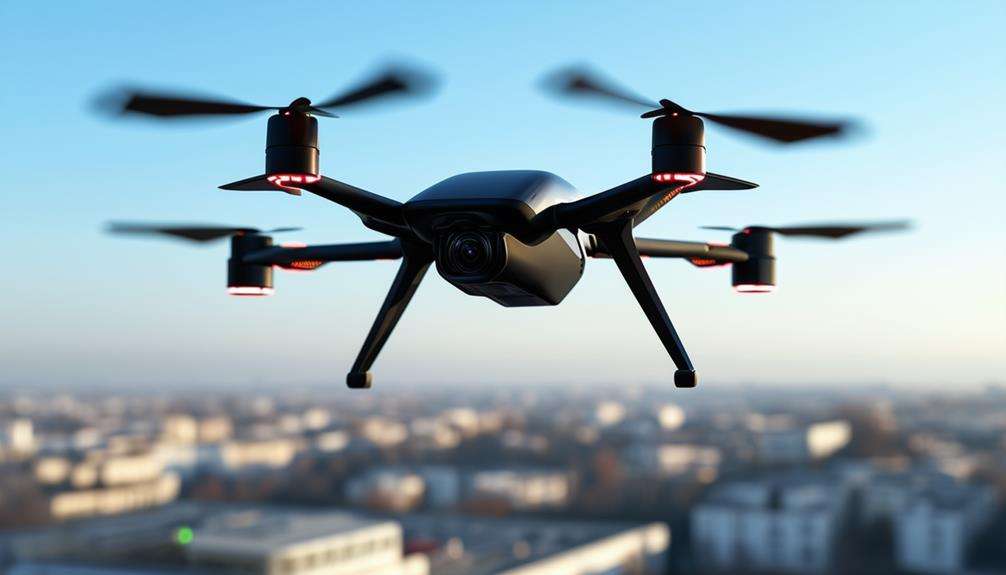
Modern UAVs are equipped with advanced features like GPS navigation, intelligent flight modes, and AI-driven autonomous capabilities, transforming aerial operations. With precise GPS guidance systems, users can track locations and plan routes with exceptional accuracy.
Intelligent flight modes simplify tasks, enabling automated takeoff, landing, and obstacle avoidance. The integration of artificial intelligence and machine learning enhances the autonomous capabilities of UAVs, making complex missions more manageable.
Swarming capabilities allow multiple UAVs to collaborate seamlessly, ideal for challenging operations like search and rescue. Additionally, responsible operation rules have been established to address safety, privacy, and regulatory concerns, ensuring UAVs are used ethically and safely.
Consider these advanced features in action:
- GPS Guidance Systems: Imagine your UAV following a pre-planned route with pinpoint accuracy, avoiding obstacles and ensuring smooth flight paths.
- Intelligent Flight Modes: Envision automated takeoff and landing, with your UAV deftly maneuvering around obstacles without manual intervention.
- Swarming Capabilities: Picture a fleet of UAVs working together, autonomously coordinating to cover large areas efficiently.
These features make modern UAVs indispensable for various applications, from commercial delivery to emergency response. Leveraging these innovations, users can achieve greater efficiency and reliability in their aerial operations.
Future Trends in Drone Design
Drones will soon fly autonomously, making real-time decisions without human intervention. Using advanced materials, these drones will be lighter, stronger, and more efficient. Such innovations will enable new applications and capabilities that were previously unimaginable.
Autonomous Flight Capabilities
Autonomous flight capabilities are revolutionizing drone operations by enabling them to navigate and perform tasks independently, without human intervention. Equipped with advanced sensors, AI algorithms, and machine learning technologies, modern drones can now manage complex tasks with ease.
Key features include:
- Obstacle Avoidance: Utilizing advanced sensors, drones can detect and avoid obstacles in real-time, ensuring safer flights.
- Route Planning: AI-driven algorithms allow drones to create efficient route plans, optimizing mission paths for maximum efficiency.
- Real-time Adjustment: With machine learning, drones can adapt to environmental changes on the fly, making real-time adjustments as needed.
These innovations enable drones to execute missions more efficiently and safely. In agriculture, for example, drones can precisely apply fertilizers and pesticides, improving crop yields. Delivery services benefit from faster, more reliable package deliveries. Surveillance operations can cover larger areas without human oversight, enhancing security. In disaster response, autonomous drones can navigate hazardous environments to deliver aid or assess damage, potentially saving lives.
Advanced Material Innovations
How are advanced material innovations shaping the future of drone design? A revolution in UAV design is underway, driven by cutting-edge material innovations. Drones are now being constructed from advanced materials like carbon fiber, titanium, and composites, making them incredibly durable and lightweight. This improves flight performance and extends operational lifespan.
Nanotechnology is pushing the boundaries further. By developing materials that are both lightweight and strong, nanotechnology enables drones to fly longer and more efficiently. Imagine a drone that can withstand harsh conditions yet remains agile and responsive—this is the future we're approaching.
3D printing is another transformative technology. It allows for the creation of complex, customized components that optimize performance. This technology enables the design of drones with intricate parts that fit perfectly together, reducing assembly steps and minimizing waste.
Smart materials like shape-memory alloys and self-healing polymers are being integrated into drones to enhance their structural integrity and repair capabilities. Imagine a drone that can 'heal' itself after minor damages, reducing downtime and maintenance costs. These material innovations are making drones more efficient, agile, and resilient, paving the way for unprecedented advancements in UAV design.
Conclusion
Drone design has evolved significantly from simple radio-controlled aircraft to today's sophisticated UAVs. Innovations such as GPS, advanced sensors, and autonomous technology have made drones more efficient and versatile. The future holds even more groundbreaking advancements, promising to make drones an integral part of various industries and pushing the boundaries of what's possible.

